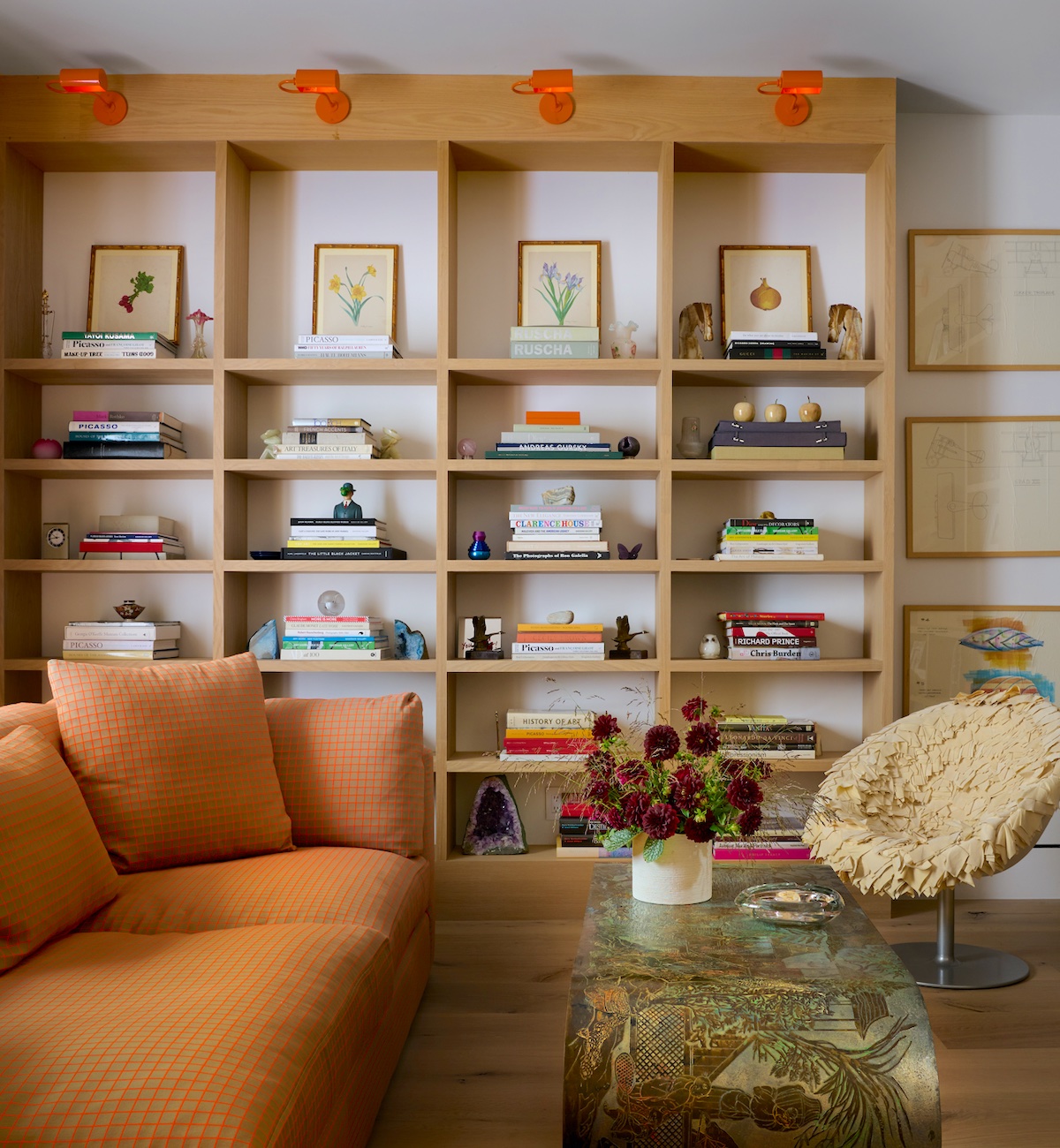
In Sasha Bikoff’s Springs, East Hampton, New York, residence, she opted for Urban Electric Co. custom neon colored sconces for her library. Photo by William Waldron

Sponsored by Currey & Company
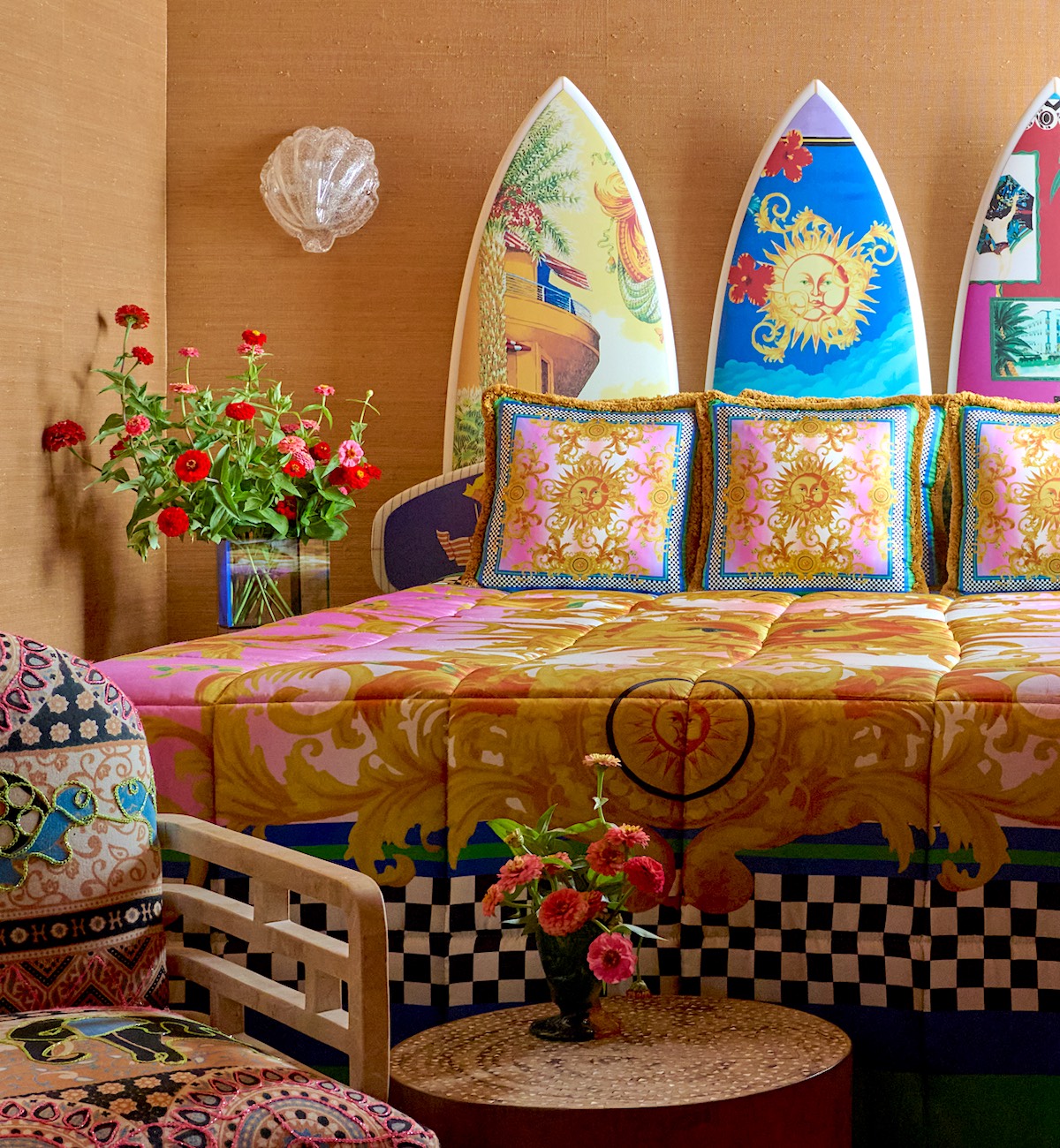
In her East Hampton guest bedroom, designer Sasha Bikoff answers nature’s call with a Murano shell sconce beside a Versace bed. Photo by William Waldron
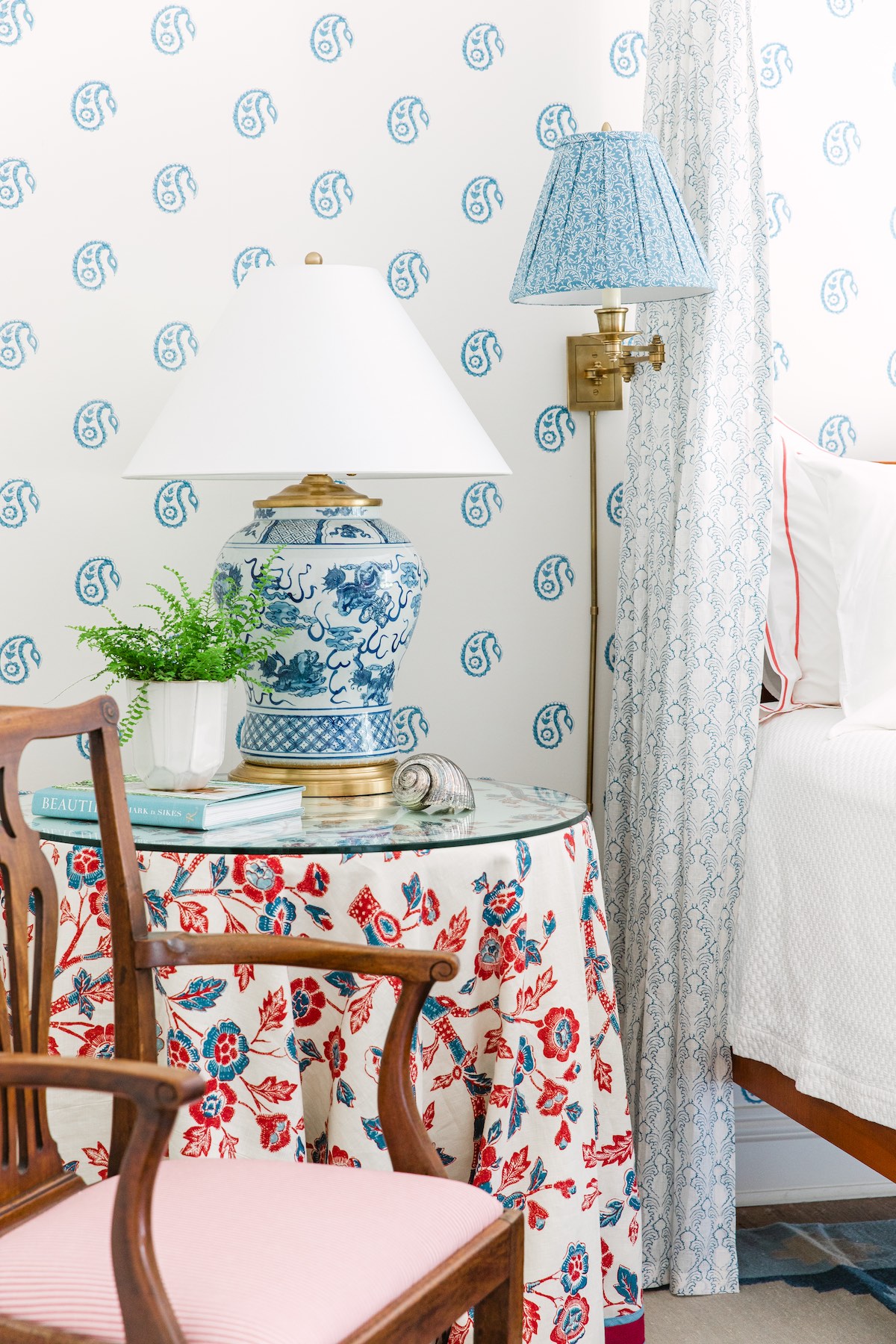
In this beach front Florida guest bedroom, designer Becky Nielsen added custom shades to swing arm sconces for easy reading. The side table is draped in a Caroline Irving floral fabric to coordinate with the Soane sheers and Les Indiennes paisley wallcovering. Photo by Caroline Bramlett
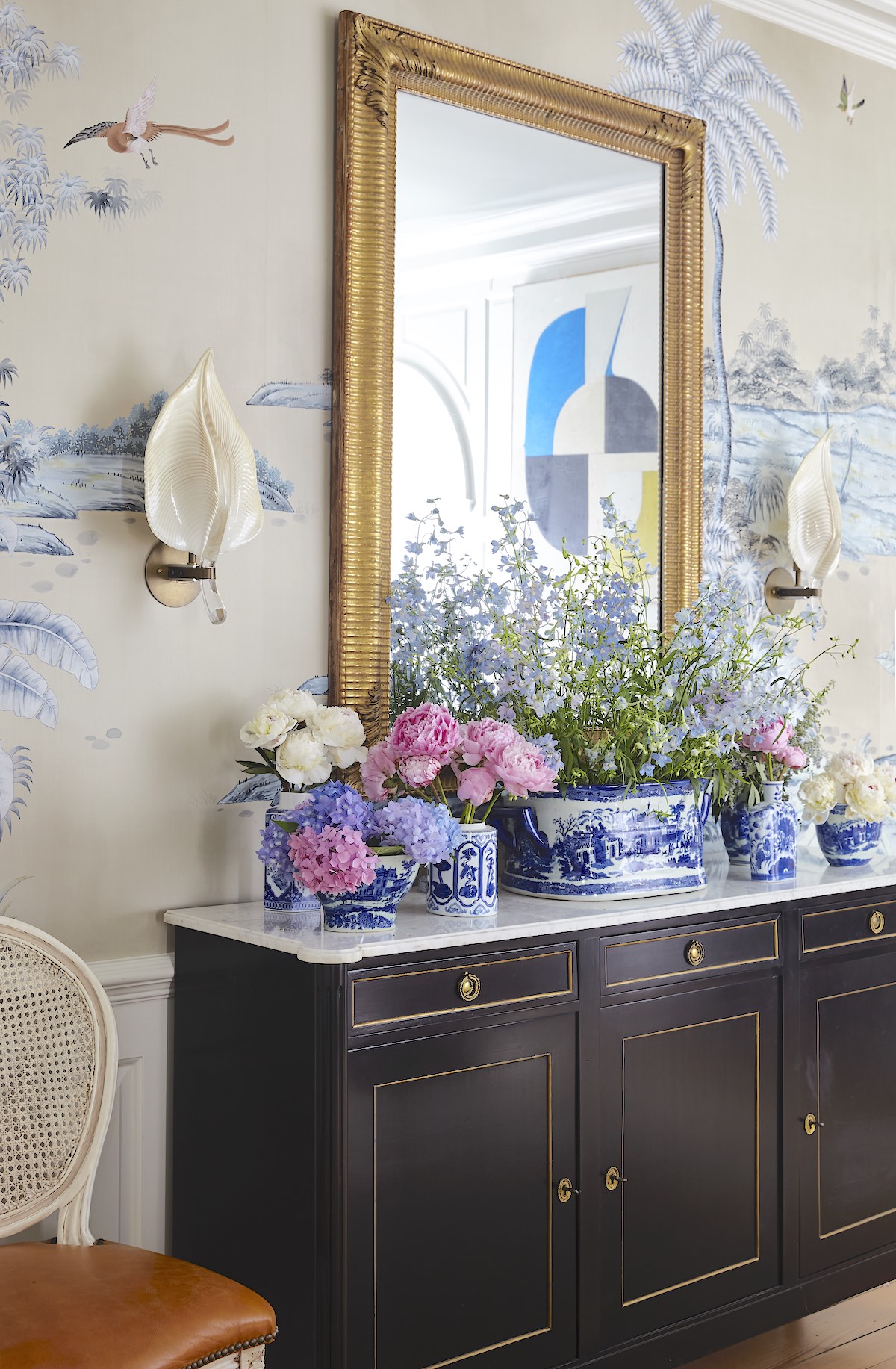
Barrie Benson sourced Murano glass sconces from 1stDibs for this Charlotte, North Carolina, dining room. The de Gournay wallpaper is shown in a custom colorway. The sideboard is a Jansen antique; the leather chairs feature Jerry Pair leather; and the florals were designed by Proper Flower of Charlotte, North Carolina. Photo by Brie Williams
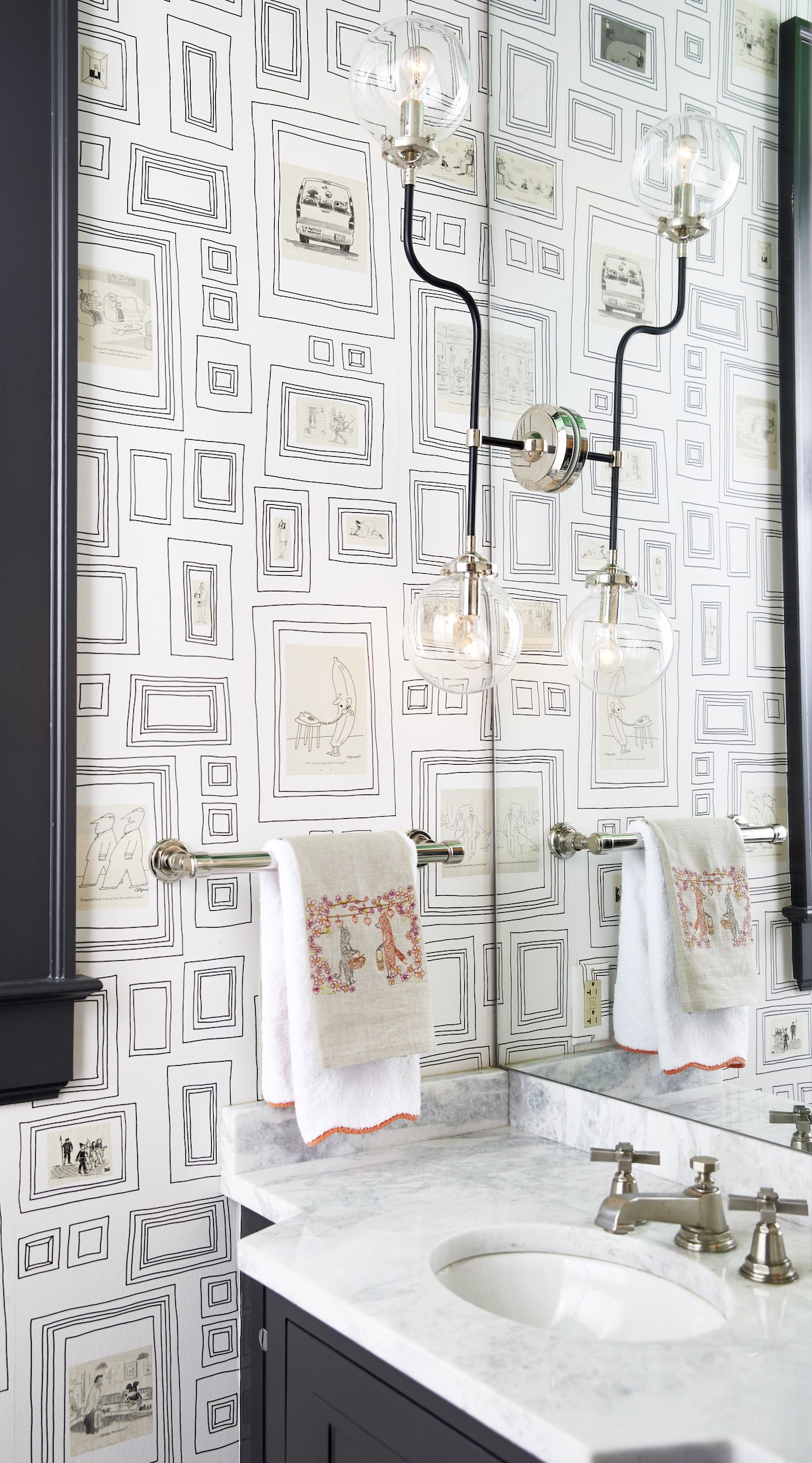
For this powder room, Barrie Benson installed a black and white frame print wallcovering sourced from Charlotte, North Carolina. For added interest, Barrie added decoupage New Yorker cartoons cut and collected by her client into the frames on wallpaper. Lighting by Visual Comfort & Co. Photo by Brie Williams
When it comes to proportion, there may not be a rule of thumb, but according to these designers, scale is everything. “Being able to draw an elevation and fixtures to scale can eliminate many mistakes,” Barrie says. “Always find out the placement of the wiring in regards to the fixture. Ultimately, bringing the fixture to the job site and seeing it there is the final act.” Becky says size and scale are most important when selecting a wall sconce. She asks the question, “Is it above a piece of art? On either side of a mirror in a bathroom? Next to a bed? You always need to scale in the sconce to the location first.”
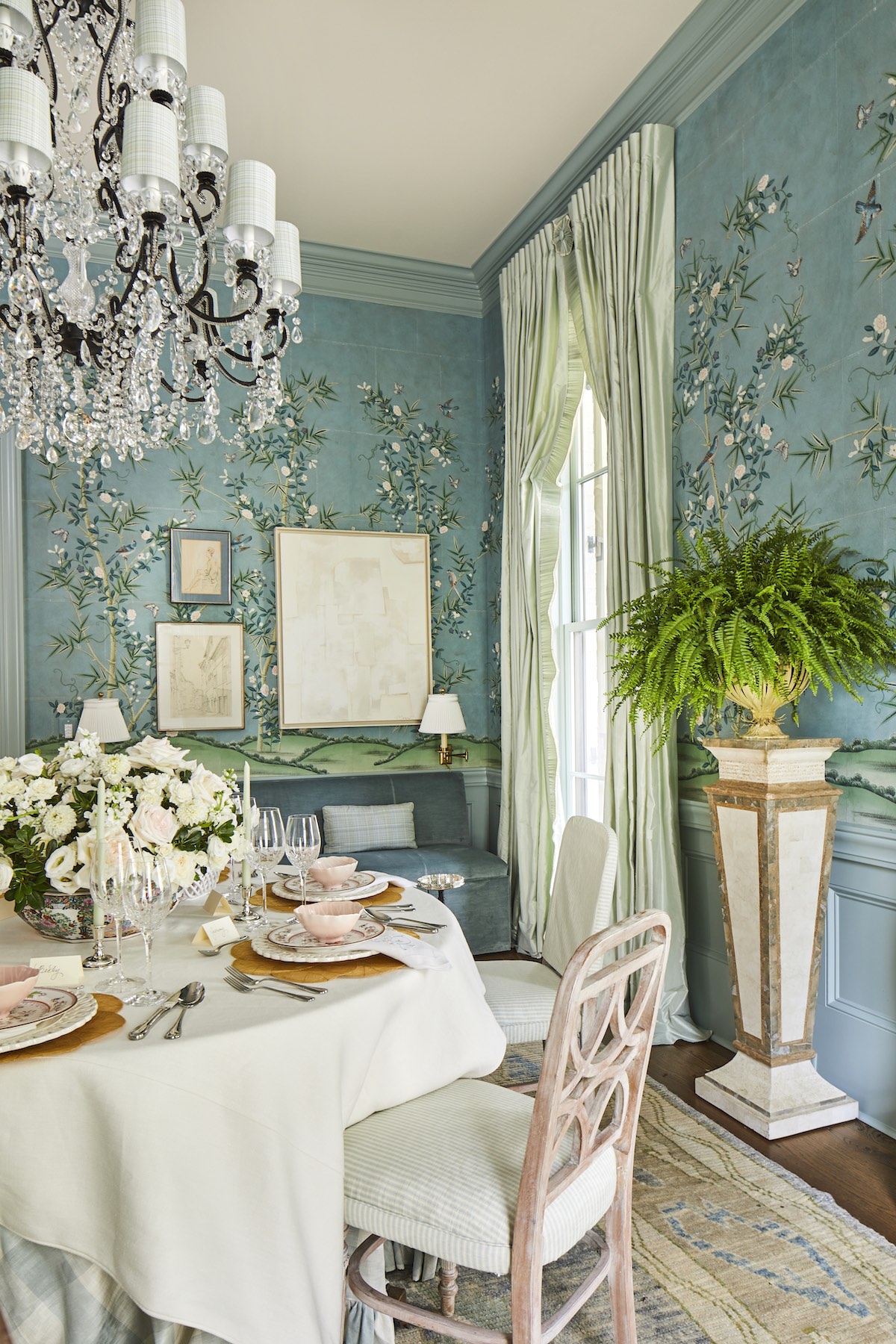
This dining room features custom Gracie wallpaper and a coordinating aqua ruffle drapery. Designer Becky Nielsen added sconces near the banquette for mood lighting and the option of slipcovers on the chairs for ease. Photo by Laurey W. Glenn
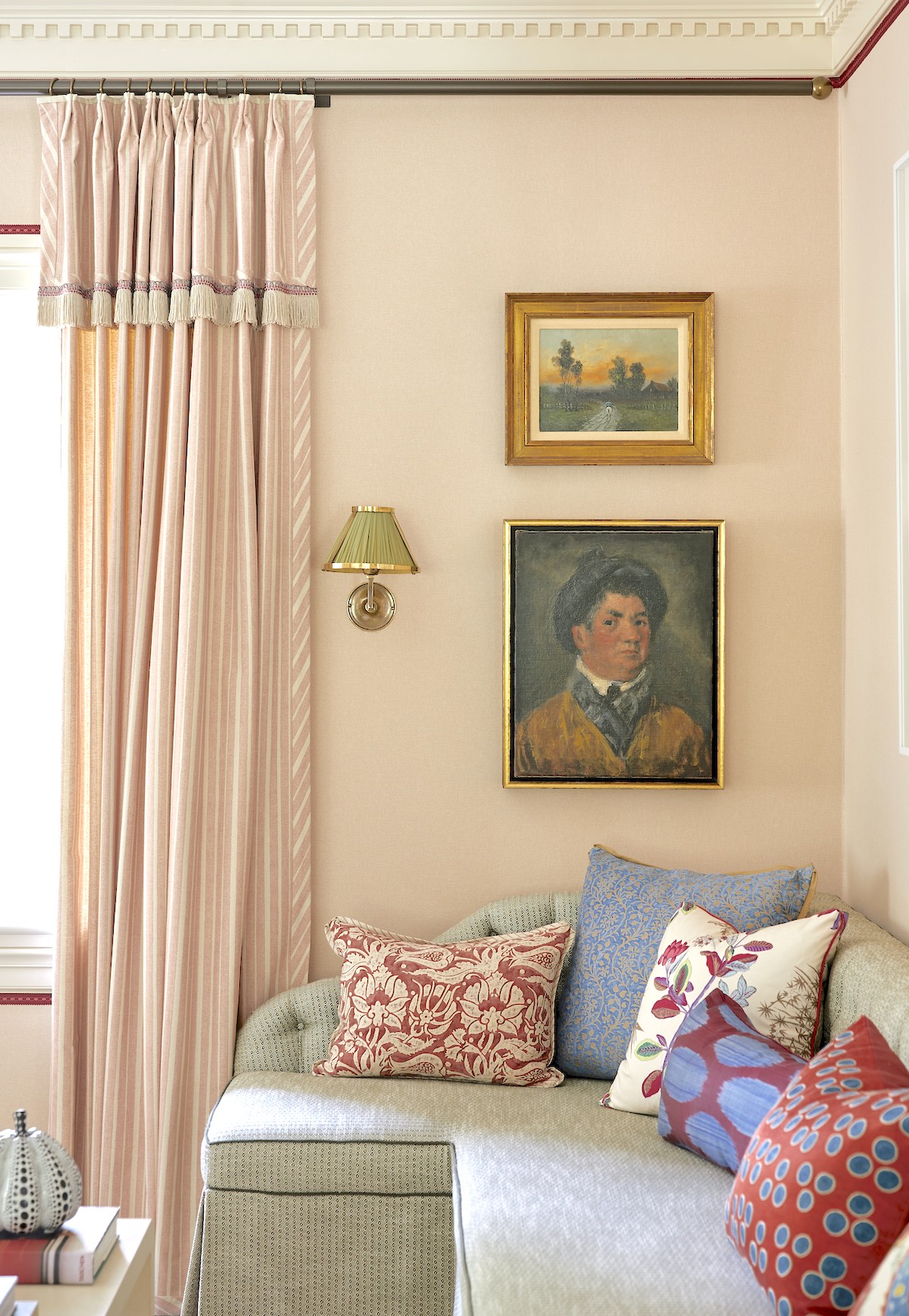
Barrie Benson incorporated a David Iatesta sconce from Ainsworth Noah over pink linen upholstered walls in her client’s Greenwich, Connecticut living room. Barrie used a Fermoie stripe and Houles fringe for the draperies. The banquette is swathed in Robert Allen fabric and detailed with Samuel & Sons trim. The custom pillows feature Susan Deliss, Quadrille, and Fortuny fabrics. Photo by Francesco Lagnese
MORE FROM THE DESIGN EXPERTS IN THIS FEATURE
- Barrie Benson – Instagram: @barriebenson
- Becky Nielsen of Becky Nielsen Interiors – Instagram: @beckynielseninteriors
- Sasha Bikoff of Sasha Bikoff Interior Design – Instagram: @sashabikoff



